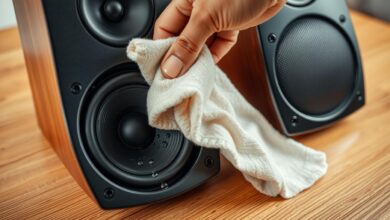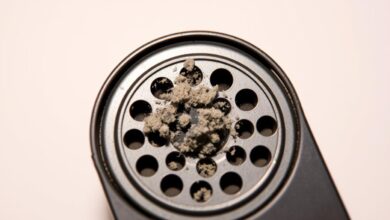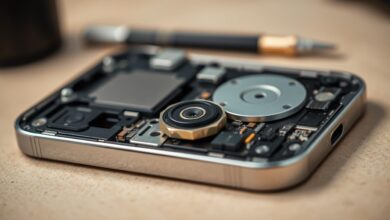how to remove water from phone

Dropping your phone in water can be really stressful. But, there are steps you can take to try and save it.
I’ve had my share of water-damaged phones. I’ll share what I’ve learned to help you through this.
If you’ve dropped your phone in the sink, toilet, or pool, don’t worry. This guide will show you how to rescue your phone.
Key Takeaways
- Act fast to save your phone.
- Turning off your device quickly can prevent more damage.
- Drying your phone right is key to its recovery.
- Don’t use heat to dry your phone, as it can cause more harm.
- For serious water damage, you might need professional help.
Understanding Phone Water Damage
Knowing how water affects your phone’s parts is key to fixing damage. Water damage is a big problem that can cost a lot to fix or make your phone useless.
How Water Damages Phone Components
Water can get into your phone’s circuits and cause big problems. It mainly damages by creating short circuits and corroding metal parts.
Short Circuits and Corrosion
Water can short circuit your phone’s electronics. This means electricity flows where it shouldn’t. Over time, it can also corrode metal parts, making your phone not work right.
Impact on Battery and Charging Systems
Water can hurt your phone’s battery and charging ports. Corrosion on the battery terminals and clogged charging ports can stop your phone from charging.
Different Types of Liquid Damage
Not all liquids are the same when it comes to damaging your phone. The type of liquid can greatly affect the damage.
Freshwater vs. Saltwater Damage
Freshwater is less harmful than saltwater because it doesn’t corrode. But, saltwater’s high salt content can cause more damage faster.
Damage from Other Liquids (Coffee, Soda, etc.)
Liquids like coffee and soda are bad for your phone. They have sugars and acids that can damage your phone’s parts more than water.
Common Misconceptions About Water-Damaged Phones
Many think using a hairdryer or rice can fix a water-damaged phone. But, these methods don’t always work and can sometimes make things worse.
| Liquid Type | Damage Potential | Recommended Action |
|---|---|---|
| Freshwater | Moderate | Dry immediately |
| Saltwater | High | Immediate professional repair |
| Coffee/Soda | High | Avoid using until professionally cleaned |
Act Fast: Immediate Steps to Take When Your Phone Gets Wet
When your phone gets wet, quick action is key. It can help prevent damage. Turn off your phone right away to stop water from getting inside.
Power Off Your Device Immediately
Turning off your phone is the first step. It stops short circuits that can harm your device.
Safe Shutdown Procedures
To shut down safely, press and hold the power button. Wait until it turns off. Don’t try to charge it or use the phone, as it can make things worse.
Force Shutdown Methods if Unresponsive
If your phone won’t turn off, try a force shutdown. Press the power button and either the volume down or up button together for a few seconds.
Remove Case, SIM Card, and Battery (If Possible)
Take off your phone’s case, SIM card, and battery if you can. This lets air in and slows corrosion.
Gently Wipe Exterior Moisture
Use a soft cloth to wipe your phone dry. This helps keep water out.
Appropriate Materials to Use
Choose a soft, lint-free cloth to dry your phone. Avoid paper towels or anything that might scratch it.
Areas Requiring Special Attention
Be extra careful around ports, buttons, and openings. Gently pat these areas dry to avoid pushing water in.
Following these steps can help a lot. If your phone got wet, getting help from a pro is a good idea. Knowing these steps is key for wet phone repair.
What NOT to Do With a Water-Damaged Phone
Knowing what not to do with a water-damaged phone is as crucial as knowing what to do. When your phone gets wet, avoid actions that can make the damage worse.
Avoid Using Heat Sources
Many people try to dry their phone with heat. But this can actually harm it more.
Why Hairdryers Can Cause More Damage
Using a hairdryer might seem like a quick fix. But it can push moisture deeper into the phone, causing corrosion and damage to the circuitry.
Dangers of Ovens, Microwaves, and Other Heat Sources
Putting your phone in an oven or microwave is very dangerous. It can cause a fire or explosion. These appliances are not made for drying electronics and can lead to serious damage.
Don’t Shake or Press Buttons Unnecessarily
Shaking your phone or pressing buttons too much can move water inside. This can reach more parts and cause short circuits.
Never Charge a Wet Phone
Charging a wet phone can be very dangerous. It can lead to electrical hazards and damage to components.
Electrical Hazards
Charging a wet phone risks electrical shock or a short circuit. This could cause a fire.
Component Damage Risks
Moisture inside the phone can cause corrosion on the circuit board. This can damage components beyond repair.
To summarize, here are the key actions to avoid with a water-damaged phone:
| Action to Avoid | Potential Damage |
|---|---|
| Using heat sources (hairdryers, ovens, microwaves) | Pushes moisture deeper, causes corrosion, risk of fire or explosion |
| Shaking or pressing buttons unnecessarily | Moves water inside, causes short circuits |
| Charging a wet phone | Electrical shock, fire, component damage |
By avoiding these common mistakes, you can improve your chances of fixing your water-damaged phone. For a DIY phone water damage fix, be cautious and patient.
How to Remove Water from Phone Using the Rice Method
Many people use rice to dry a wet phone. But, what’s the science behind this method? The rice method is a popular DIY fix for water-damaged phones. Yet, its effectiveness and right use are often not clear.
The Science Behind the Rice Method
The rice method uses desiccation to dry out phones. Dry rice pulls moisture from the phone. Rice is hygroscopic, meaning it loves water. By putting your phone in rice, you help it get rid of moisture.
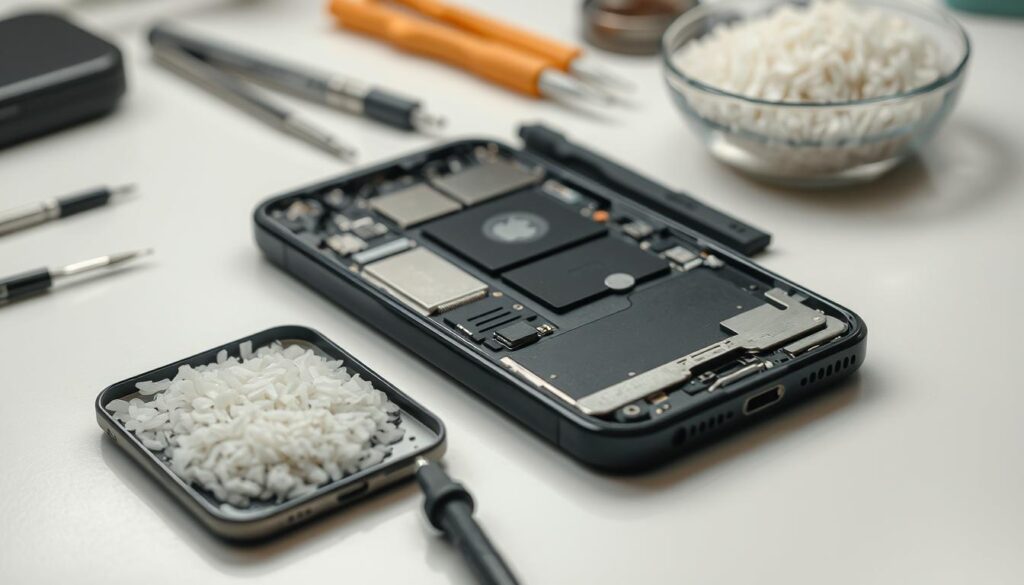
Proper Rice Drying Technique
To dry your phone with rice, follow these steps:
Container Selection and Preparation
Use a big container to cover your phone in rice. A bowl or plastic container with a lid is good. Fill it with rice and put your phone in the middle. Make sure the rice covers your phone.
Phone Positioning for Optimal Results
Place your phone so it’s fully exposed to the rice. Make sure the rice can get to all parts of the phone. If you can, lift the phone a bit to help the rice get all around it.
Limitations and Potential Risks
The rice method has its limits and risks. Knowing these can help you avoid damage.
Rice Dust Concerns
Rice dust can harm your phone. Use fine, dust-free rice or seal your phone in a bag before using rice.
Effectiveness Timeline
How well the rice method works depends on the damage and how fast you act. Leave your phone in rice for at least 24 to 48 hours before trying to use it.
In summary, the rice method can help dry a wet phone. But, know its limits and risks. By using it correctly and understanding its downsides, you can increase your phone’s chances of drying out successfully.
Silica Gel: A Superior Method for Phone Water Removal
Looking for a good DIY fix for a wet phone? Silica gel is a top choice. It’s better than old methods because it dries phones out really well.
Why Silica Gel Outperforms Rice
Silica gel beats rice for drying phones because it absorbs more water. Let’s look at why it’s a better pick.
Absorption Rate Comparison
Silica gel absorbs water faster than rice. It’s a better desiccant, which means it dries phones quicker.
| Desiccant | Absorption Capacity | Drying Efficiency |
|---|---|---|
| Silica Gel | High | Excellent |
| Rice | Moderate | Fair |
Scientific Evidence
Science backs up silica gel’s effectiveness. It controls humidity better than rice. This makes it a solid choice for fixing wet phones.
Creating an Effective Silica Gel Drying Chamber
To dry your phone well with silica gel, you need a good setup.
Materials Needed
- Silica gel packets
- A sealable container
- Your wet phone
Step-by-Step Setup Instructions
- Put silica gel packets at the bottom of the container.
- Place your phone on top of the silica gel.
- Cover the phone with more silica gel packets.
- Seal the container and wait.
How Long to Leave Your Phone in Silica Gel
How long to leave your phone in silica gel depends on a few things. But here are some basic guidelines.
Minimum Drying Time
Leave your phone in the silica gel for at least 48 hours. This gives the silica gel enough time to soak up the moisture.
Signs That Drying Is Complete
Look for signs that your phone is dry. Check if there’s no moisture on the phone and if the silica gel stays dry. If the silica gel is still dry after 48 hours, your phone is probably dry.
By following these steps and using silica gel, you can fix your wet phone. This method is a great addition to your DIY toolkit for fixing water-damaged phones.
Alternative Household Methods for Drying Your Phone
There are many ways to dry a wet phone besides rice or silica gel. If your phone got wet and you don’t have the usual drying agents, don’t worry. There are other methods you can try.
Using Uncooked Instant Oatmeal
Uncooked instant oatmeal can help dry your phone.
Preparation and Process
To use oatmeal, fill a container with oatmeal. Place your phone on it and cover it with more oatmeal. Seal the container and wait for at least 48 hours.
Effectiveness Rating
This method works okay, but it’s not as good as silica gel. Try it if you have oatmeal at home.
Cat Litter Method
Some cat litters can absorb moisture, making them good for drying a wet phone.
Type of Litter to Use
Use non-clumping, silica gel-based cat litter for the best results.
Setup Instructions
Put cat litter in a container, place your phone on it, and cover it with more litter. Wait for 48 hours.
Air Drying with Proper Positioning
At times, the simplest way is the best. Air drying your phone correctly can help reduce water damage.
Optimal Environmental Conditions
Make sure your phone is in a dry, well-ventilated area, away from sunlight.
Phone Positioning Techniques
Position your phone to let moisture escape. Use a stand or lay it on its side to help dry it.
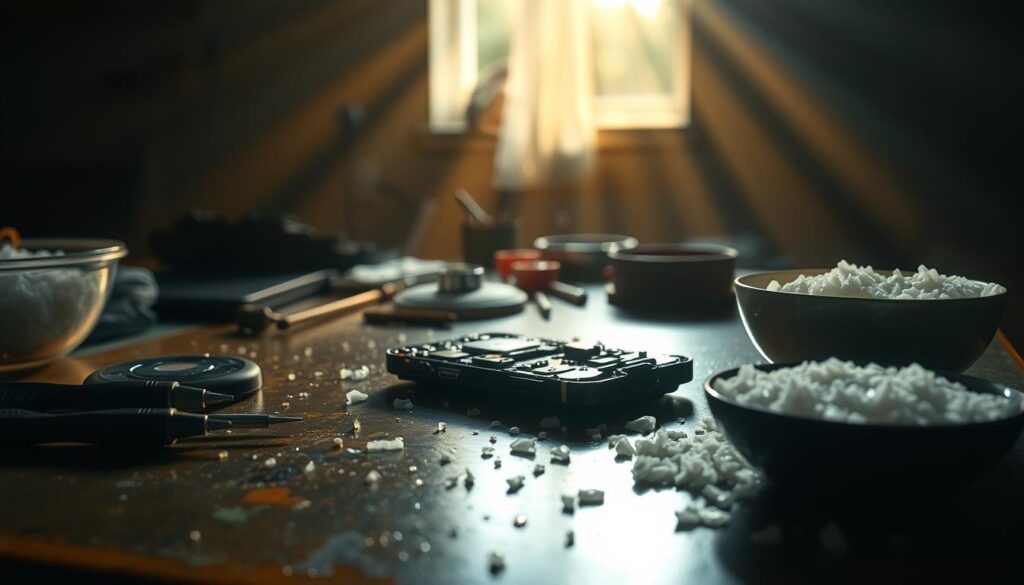
| Drying Method | Effectiveness | Ease of Use |
|---|---|---|
| Uncooked Instant Oatmeal | Moderate | Easy |
| Cat Litter | High | Easy |
| Air Drying | Low to Moderate | Very Easy |
When your phone gets wet, act fast and use the best drying method you can. These household methods can help, but they might not always work. If you’re having trouble fixing a wet phone, getting professional wet phone repair might be your best option.
Professional Desiccants and Commercial Drying Solutions
Professional desiccants and commercial drying products offer a better way to fix water damage in phones. They go beyond simple DIY phone water damage fixes. These advanced solutions are for those who need a reliable way to fix mobile phone water damage.
Commercial Water Removal Products
Commercial water removal products are made to dry out electronic devices well. They work better than home methods.
Popular Brands and Options
Some well-known brands include:
- E-Dry System
- Dryerite
- Desi-Pak
These brands have different desiccants for drying phones.
Where to Purchase
You can buy these products on Amazon or the manufacturers’ websites. Electronics repair stores also sell them.
Vacuum Chamber Drying
Vacuum chamber drying is a top-notch method for drying water-damaged phones. It uses a vacuum chamber to remove moisture.
Effectiveness Comparison of Different Methods
It’s important to compare drying methods’ effectiveness. Household methods like rice or silica gel work, but commercial desiccants and vacuum chamber drying are more reliable, especially for severe damage.
When looking at water damage phone repair, knowing about different drying methods helps. Professional desiccants and commercial drying solutions are advanced options for fixing water-damaged devices.
Using Isopropyl Alcohol to Displace Water
Isopropyl alcohol is a common household item that can help dry your phone. It’s great when other methods, like the rice method, don’t work. This phone water damage solution works by evaporating moisture faster than water.

When to Consider the Alcohol Method
Use the alcohol method if your phone got wet recently. It’s also good if you’ve tried other methods without success. But, be careful because isopropyl alcohol can harm some phone parts if not used right.
Step-by-Step Alcohol Cleaning Process
Required Materials
- Isopropyl alcohol (at least 90% concentration)
- A container or tray to hold the alcohol
- Tweezers or a small tool to handle components
- A soft-bristled brush (optional)
Application Techniques
To use the alcohol method, first take apart your phone. Then, soak the wet parts in isopropyl alcohol. Let it sit for a few minutes to let the alcohol work.
After that, use a soft-bristled brush or tweezers to remove any moisture or debris. Finally, let the parts air dry or use a gentle airflow to speed up drying.
Safety Precautions When Using Alcohol
Ventilation Requirements
Work in a well-ventilated area to avoid inhaling alcohol fumes. Open windows or use a fan for good airflow. This prevents alcohol vapors from building up.
Component Protection Measures
To protect your phone’s parts, avoid spraying or pouring alcohol directly on them. Gently submerge the parts or use a soft-bristled brush to apply the alcohol. Be careful around connectors, screens, and other sensitive parts. If unsure, consult a professional or avoid using this method.
By following these steps and precautions, you can use isopropyl alcohol to fix water damage on your phone. Remember, this method should be used carefully and as part of a complete remove water from phone guide.
Dealing with Specific Phone Models
Water damage phone repair isn’t a one-size-fits-all solution. It varies a lot across different models. The success of a repair often depends on the phone’s make and model. Each device has unique features that affect how water damage is handled.
iPhone Water Removal Techniques
iPhones have special features for water removal. For example, some models have a water eject feature. This can be activated to remove water from the device.
Model-Specific Considerations
Different iPhone models have different levels of water resistance. For example, newer models like the iPhone 12 have better water resistance than older ones. Knowing these differences is key for effective repair.
Using the iPhone’s Water Eject Feature
The water eject feature on iPhones can be found in specific settings or with certain accessories. It helps to get rid of water, which can reduce damage.
Samsung Galaxy Water Damage Solutions
Samsung Galaxy devices have their own set of features and repair techniques. For example, accessing the battery compartment is crucial for drying out the device.
Accessing Battery Compartments
Removing the battery can help dry out some Samsung Galaxy models. But, this should be done carefully and according to the manufacturer’s guidelines.
Using Samsung’s Water Lock Mode
Samsung’s Water Lock Mode is designed to prevent further damage from water. Activating this mode can help minimize damage.
Google Pixel and Other Android Devices
Google Pixel and other Android devices have their own unique vulnerabilities and features when it comes to water damage. Knowing these can help choose the right repair approach.
Model-Specific Vulnerabilities
Some Android devices may be more prone to water damage due to their design or hardware components. Identifying these vulnerabilities is crucial for effective repair.
Android Water Detection Features
Many Android devices, including Google Pixel phones, have water detection features. These features can alert users to potential water damage. Using these features can aid in the repair process.
When dealing with water damage, acting quickly and choosing the right repair method based on the phone’s model is essential. Whether it’s an iPhone, Samsung Galaxy, or Google Pixel, understanding device-specific techniques can greatly improve repair success.
Addressing Saltwater and Chlorinated Water Damage
Saltwater and chlorinated water can harm your phone because they are corrosive. Being exposed to these waters increases the risk of damage more than freshwater.
Why Saltwater Is More Damaging
Saltwater is more harmful than regular water because of its high salt content. This content speeds up corrosion. When saltwater touches your phone’s parts, it can quickly damage them.
Corrosion Acceleration Factors
- The salt in the water makes it more conductive. This allows electrical currents to flow easily, causing short circuits.
- After the water dries, the salt left behind can keep corroding metal parts.
- The mix of salt and moisture creates a perfect environment for corrosion.
Long-term Effects
Long-term exposure to saltwater can be very bad. Even if your phone seems fine at first, corrosion can still damage it. This can lead to expensive repairs or make your phone unusable.
Neutralizing Salt and Chlorine Residue
To lessen the damage from saltwater or chlorinated water, you need to remove the residue. There are a few ways to do this:
Distilled Water Rinse Technique
Using distilled water to rinse your phone’s affected areas can help remove salt and chlorine residue. This method is good for cleaning the outside and some internal parts.
Specialized Cleaning Solutions
There are special cleaning solutions that can neutralize corrosive substances. These solutions might be better than distilled water, especially for tough salt or chlorine residue.
Additional Steps for Ocean or Pool Water Exposure
If your phone got wet from the ocean or pool, there are extra steps to take. First, act quickly to limit the damage. Remove any accessories and gently dry the outside. Then, follow the steps for removing salt and chlorine residue.
If the damage is too much, consider getting professional help for your water-damaged phone. Experts can check the damage and fix your phone.
When to Seek Professional Repair Services
Even with DIY efforts, some water-damaged phones need professional help. DIY fixes work for small problems, but serious damage calls for experts.
Signs That DIY Methods Aren’t Enough
If DIY drying doesn’t solve your phone’s issues, it’s time for a pro. Look out for these signs:
- Persistent Issues After Drying: If your phone still malfunctions or shows water damage signs, like corrosion, after drying, get a pro’s help.
- Visible Internal Moisture: Seeing moisture or corrosion inside your phone means you need a pro to avoid more damage.
What to Expect from Professional Water Damage Repair
Professional repair services fix water damage thoroughly. Here’s what you can expect:
Diagnostic Processes
Experts will check your phone’s damage level. They’ll look for corrosion, check component functions, and figure out what repairs are needed.
Component Replacement Options
They can replace damaged parts like the logic board, screen, or battery. They use genuine parts and know how to install them right.
Average Costs and Timeframes
Repair costs and time vary based on damage and phone type. Several factors affect the price:
Manufacturer vs. Third-Party Repair
Using a manufacturer or authorized service can be pricey but may keep your warranty intact. Third-party services are cheaper but choose wisely for quality.
Insurance Coverage Considerations
See if your phone insurance covers water damage. Some policies might pay for repairs or a new phone, saving you money.
In summary, DIY fixes are good for small problems, but serious damage needs a pro. Knowing when to ask for help, what to expect, and the costs and time involved helps you make the best choice for your water-damaged phone.
Data Recovery Options for Water-Damaged Phones
When your phone gets wet, saving your data is urgent. Water damage can cause data loss right away or slowly. Quick action is key.
Backing Up Data from a Water-Damaged Phone
If your phone still works after getting wet, backing up your data is crucial. There are a few ways to do this.
Emergency Backup Methods
Act fast to back up your data with:
- Cloud services like Google Drive or iCloud
- Direct connection to a computer via USB
- Bluetooth or Wi-Fi transfer to another device
Software Solutions
Tools like Dr.Fone and PhoneRescue can help. They can get back contacts, photos, and more.
Professional Data Recovery Services
If your phone won’t work, professional help might be needed.
When to Consider Professional Recovery
Think about professional help if:
- Your phone won’t turn on
- Data is very important and can’t be replaced
- You’re not sure about DIY recovery
Cost-Benefit Analysis
Professional recovery can cost $100 to $500 or more. It depends on the service and how hard it is. Think about if the data is worth the cost.
For more info on data recovery, check out http://www.restoringdata.ca/blog/.
Preventative Measures for Future Data Protection
To avoid future data loss, take steps now.
Cloud Backup Solutions
Use cloud backup like Google Drive, iCloud, or Dropbox. They automatically save your data.
Regular Backup Schedules
Make a regular backup plan. Back up daily, weekly, or monthly, based on your needs.
Preventing Future Water Damage
To avoid water damage repair, prevent it first. While accidents can happen, taking steps can lower your phone’s risk. We’ll look at ways to protect your device.
Waterproof Cases and Accessories
Getting a waterproof case is a smart move. These cases keep your phone dry even when it’s underwater.
Top-Rated Waterproof Cases
Brands like LifeProof and OtterBox make great waterproof cases. They protect your phone from water, drops, and scratches.
Screen Protector Considerations
Using a screen protector with your waterproof case adds extra protection. Choose protectors made for waterproof cases.
Understanding IP Ratings
IP ratings show how well a device resists solids and liquids. Knowing these ratings helps choose the right protection for your phone.
What IP67 and IP68 Really Mean
IP67 and IP68 mean your device can handle water. IP67 can go up to 1 meter for 30 minutes. IP68 can go deeper.
Limitations of Water Resistance
Water resistance isn’t the same as being waterproof. Over time, your phone’s seal can weaken, reducing its water resistance.
Insurance and Protection Plans
Even with protection, accidents can still happen. Insurance and plans offer peace of mind and financial security.
Carrier Insurance Options
Carriers have insurance plans for accidental damage, including water. These plans are easy to get since they come with your service.
Third-Party Coverage Plans
Companies like Asurion also offer protection plans. They cover water damage and more.
| Insurance Provider | Coverage | Cost |
|---|---|---|
| Carrier Insurance | Accidental damage, including water damage | $10-$20/month |
| Asurion | Comprehensive coverage, including water damage | $15-$30/month |
Conclusion
Removing water from your phone is urgent and needs the right steps. We’ve looked at ways to do this, like the rice method and silica gel. Quick action is key to lessening damage.
If your phone gets wet, act fast. Turn it off right away, take off accessories, and dry the outside. For deeper water issues, silica gel or professional desiccants can work well.
While you can try DIY fixes, some cases need a pro. Knowing when to seek help is important. This guide can help you save your phone from water harm.
Preventing water damage is also crucial. Use waterproof cases and know about IP ratings. Being ready and knowing how to act can protect your phone from water damage.
FAQ
How long should I leave my phone in rice to dry?
Leave your phone in rice for at least 48 to 72 hours. Check it after 24 hours and dry longer if needed. Some say up to 5 days for best results.
Can I use a hairdryer to dry my wet phone?
No, hairdryers can harm your phone. The heat and air can push moisture deeper and damage parts.
Is silica gel better than rice for drying a wet phone?
Yes, silica gel is better. It absorbs moisture faster and dries electronics more efficiently than rice.
Can I charge my phone after it’s been dried?
No, wait until your phone is completely dry before charging. Charging a wet phone can be dangerous and cause more damage.
How can I tell if my phone is completely dry?
Look for visible moisture and check ports and SIM card slot. Try turning it on. If it works without water damage, it’s dry.
What should I do if my phone has been exposed to saltwater?
Rinse your phone with distilled water to remove salt. Then, dry it with silica gel or a commercial desiccant.
Can I use uncooked instant oatmeal to dry my phone?
Yes, oatmeal can dry a wet phone. But, it’s not as effective as silica gel or commercial products.
How much does professional water damage repair cost?
Repair costs vary by phone model, damage, and service provider. It can be from to hundreds of dollars.
Can I recover data from a water-damaged phone?
Yes, you can recover data with software or professional services. Success depends on damage and quick action.
Are waterproof phones completely immune to water damage?
No, waterproof phones are not completely safe. Water resistance can wear off, and IP ratings have limits.
How can I prevent future water damage to my phone?
Use a waterproof case, know your phone’s IP rating, and get insurance or protection plans for water damage.
